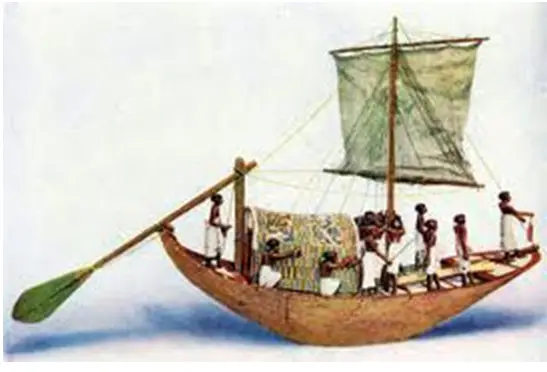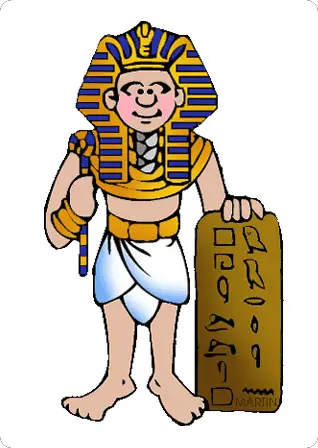Egyptian Daily Life
The ancient Egyptians thought it was important to live in a way that was fair and happy for everyone.
They liked to have fun and play games, read books, and celebrate with their friends and family.
This was just as important to them as working hard on the farm or building big things like temples and statues.
The Nile – Lifeblood of Civilization
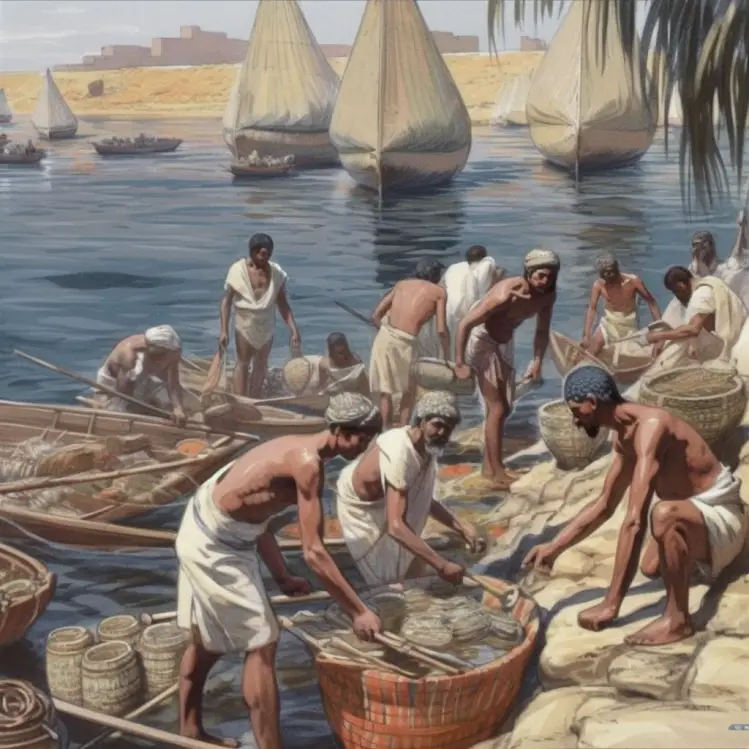
Egypt is a dry, hot desert country and ancient life depended on the waters of the River Nile.
The Nile River was really important to the ancient Egyptians because it provided them with water to drink and irrigate their crops.
They would use the river for transportation, and they would also catch fish and hunt animals that lived near the river.
The Nile also made the land around it really fertile, which means it was really good for growing crops.
- Water to irrigate the fields;
- The main means of traveling and of transporting goods, all by boat;
- An important source of protein food when people caught fish;
- The main building material was mud brick
Houses
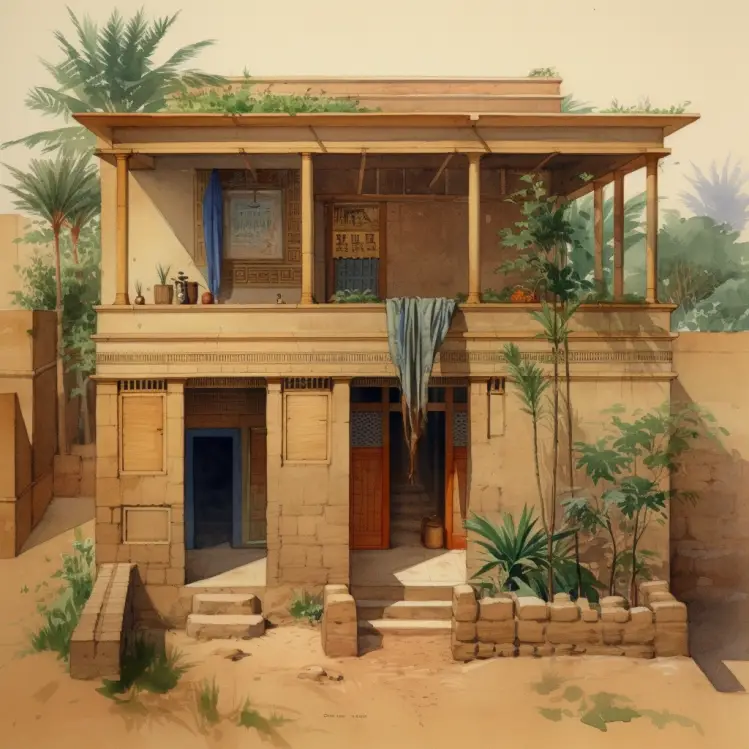
People lived beside the Nile and Egyptian houses were almost all built from bricks of Nile mud. (The palaces of the Pharaohs were built from stone.)
The mud was carried in baskets from the Nile and poured into molds.
When the mud in the mold was dry, it was turned out and left to bake in the heat of the sun.
- Was cool inside.
- Had a flat roof so that in very hot weather people could sleep on the roof in the cool of the night.
- Often had courtyards with walls built around them.
- Cooking was done out of doors in the courtyard.
Egyptian Servants
We know about Egyptian daily life from the huge number of wall paintings in tombs and temples.
The houses we are shown are the houses of wealthier people, priests and scribes, government officials, and master craftsmen.
The paintings show a large number of servants, or probably slaves, working in the houses.
From the paintings, we know that the servants:
- Looked after the charcoal fires;
- Ground wheat to make bread;
- Cooked meat over fires;
- Carried baskets full of vegetables.
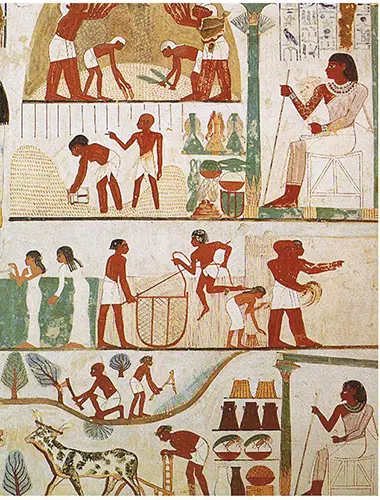
The Rich
The richer families in ancient Egypt had houses with beautiful gardens, looked after by slaves or servants.
Men went wild-fowling (hunting wild duck) in the marshes and women are shown sitting on couches talking to each other and listening to music.
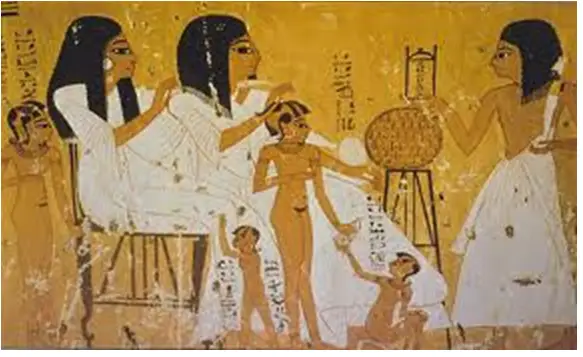
Games and Entertainment
Children played with toys such as spinning tops and wooden models of animals which they could pull along on strings.
They played with balls made of clay and they played at leapfrog.
Girls played dancing games, holding hands in a ring, and little boys played at being soldiers.
Adults played a number of board games.
We know that they played a game for two people called Senet on a board with 30 squares.
The aim was to reach the kingdom of Osiris through all the dangers on the way.
The Egyptians also enjoyed story-telling, parties, and music.
There were a number of great public festivals, such as the celebration of the resurrection of Osiris (see Egyptian religion) where thousands of people danced to the music of harps and flutes.
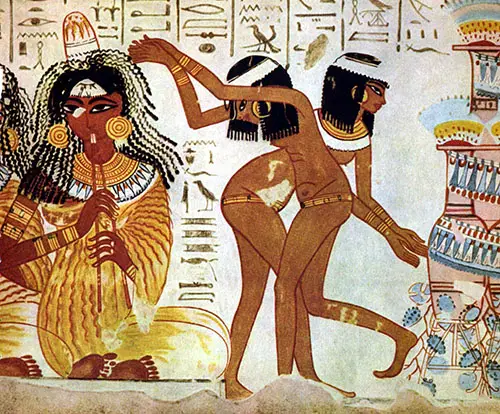
The Farmers
The vast majority of people in Egypt, however, were farmers who farmed the fields on the bank of the Nile.
Men, women and children from a young age all worked in these tiny fields.
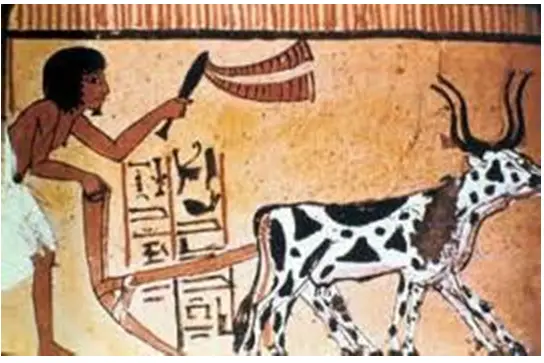
- They ploughed the land with a wooden plough pulled by oxen.
- They sowed the fields with seed and watered the ground with water from the Nile.
- They harvested the grain using a sickle.
- They threshed (beat out the grain from the husk) it by getting their oxen to walk round and round treading on it.
- All the grain was controlled by royal officials and kept in a royal granary.
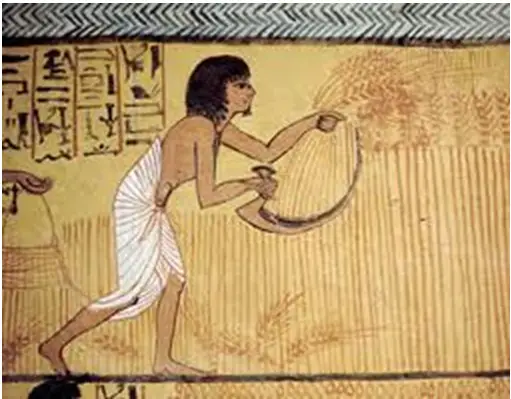
Egyptian Storytelling
You may remember the story of the Pharaoh who dreamt of the seven fat cattle followed by the seven lean cattle.
Joseph interpreted his dream, telling him that there were going to be seven very good harvests, followed by seven poor harvests.
He advised the Pharaoh to collect the grain during the seven good years so that the people would not starve during the seven poor years.
This story is more evidence that the grain was controlled by the Pharaoh’s government and was then distributed when necessary.
Food
The crops and vegetables meant that even the poorer Egyptians usually ate a balanced diet.
- The staple food was bread from grain.
- They grew onions and leeks and salad vegetables
- They grew beans and dried them so that they could be cooked and eaten throughout the year
- They grew fruit such as figs and pomegranates.
- They caught fish from the Nile.
- They kept cattle.
- They made beer from barley and richer people drank wine made from grapes.

Clothes
Farmers also grew flax. Linen cloth is made from flax and Egyptian clothing was made from linen.
Men wore a short linen kilt and women usually wore a linen tunic that hung from their shoulders.
Little children sometimes wore no clothes at all but often wore jewelry around their necks.
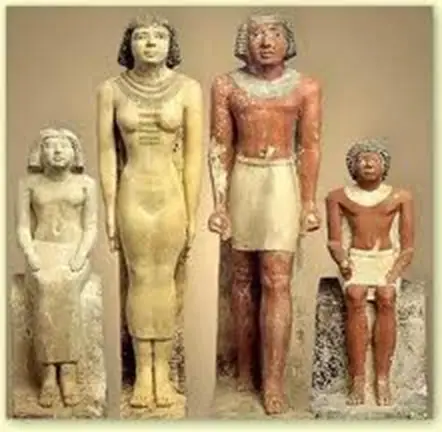
Trades
Although most people were farmers, there were many other trades, carpenters, metal-workers, bakers, goldsmiths, boat builders.
Trade was carried out by way of exchanging goods.
For example, a farmer might exchange a basket of onions for a bag of charcoal, or a cow for a small boat.
Everything in Egypt depended on the Nile and everything was transported on boats and ships on the river.
In order to fish and to transport goods from one place to another people had small boats made of papyrus stalks bound together.
Bigger boats and larger ships were made of wood, which was mostly imported from Lebanon.
We have many paintings of boats carrying cattle and other heavy goods on the Nile. It was a very busy river with constant traffic.
